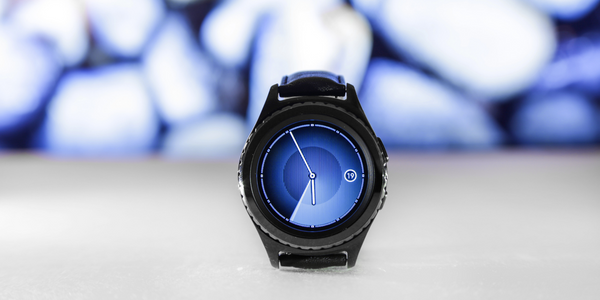Industrial Wearables

Industrial wearable devices are tools designed to improve workplace productivity, safety, and efficiency in sectors such as manufacturing, logistics, and mining. These devices collect data in real time, track activities, provide alerts, and provide customized experiences depending on the users' needs and organizational objectives. They are typically designed for specific situations or industry verticals, as opposed to consumer Wearables which are often general in function. Industrial Wearables can be designed to aid a worker in performing specific tasks or to measure health parameters for working in dangerous environments. In addition to performing a specific function for their wearer, the devices can be linked to enterprise systems. For example, linking Wearables worn by employees in hazardous environments to employee welfare programs can be used to track and provide evidence of the wellbeing of employees, thereby reducing health insurance costs.
- Other
- Product Development
The global industrial wearable devices market is expected to grow at a CAGR close to 11% from 2018 to 2022.
Source: Technavio
The market value of industrial wearable devices is projected to exceed US$ 2.6 Billion by 2023, expanding at a CAGR of 9.6% from 2018 to 2023.
Source: Research and Market
How do industrial wearable devices provide business value?
Industrial wearables are becoming increasingly common due to the steady decline in component costs and improvements in functionality driven by learning from the consumer sector. Industrial wearables have been used to increase efficiency, improve safety, shorten communication loops, accelerate onboarding and training processes, and enable remote experts to confer on technical issues. Specific applications include:
- Increasing plant efficiency: Tracking employee movements allows processes to be redesigned and optimized to improve plant efficiency.
- Improving safety: Wearable devices can be used to detect injuries, falls, or the presence of toxic gases and to notify employees or management when a safety risk is present. They can also help to make sure rotation occurs as planned to minimize the risk of injury due to fatigue or excess repetition.
- Shortening communication loops: Industrial wearables can ensure that staff has the information they need when in situations where a mobile phone or computer-based communication is not feasible. Safety alerts, text messages, and data feeds can be sent to the person as needed.
- Reinventing training: When onboarding and training new employees, wearable technology can act as a training aid. Remote expert systems allow a trainer to ‘see’ through the eyes of a new hire or to send reminders and instructions at specific times.
- Leveraging remote experts: Wearables can allow remote experts to advise and guide on-site staff. This can bring niche expertise to remote facilities in minutes instead of the days that can be required to arrange cross-border travel.
Frontline Workers: Frontline workers value industrial wearables as tools that enhance their safety, comfort, and job performance. They appreciate wearable devices that provide real-time feedback, guidance, and assistance, enabling them to work more effectively and confidently in challenging environments.
Safety Managers: Safety managers prioritize the implementation of industrial wearables to mitigate workplace hazards, reduce accident rates, and ensure regulatory compliance. They rely on wearable sensors and monitoring systems to track workers' health and safety metrics, conduct risk assessments, and implement preventive measures to address potential safety issues.
What industrial devices are currently available or are in late stages of development?
Head-mounted wearables combine mobile computing, video input, guided work instructions, access to remote experts and other functionality to guide operators in their tasks. These systems are currently expensive and face challenges related to weight and inconvenience. However, as the form factor improves they will likely become ubiquitous in specific operating environments.
Hands-free wristwear provides industrial workers easy access to live data, documents, work procedures and video, as well as connections to remote experts while they are out in the plant or field. These devices can be as small as a watch but large form factors enable significantly richer information to be communicated. They are often the size of a small smartphone.
Augmented reality glasses have enormous potential to train workers or support guided maintenance or operations in a variety of industrial settings, including factories, warehouses, and construction sites.
What do industrial wearable devices use to transmit data?
Many wearable monitoring devices use a low-range RF signal to transmit data. Typically, they are connected to the IoT cloud solutions through an IoT gateway or a mobile app. Wearable devices stream processed and unprocessed data continuously and are expected to work constantly, irrespective of the availability of Internet connection. This creates technology challenges related to volume and offline processing of data.
Sensor Data Collection: Industrial wearables incorporate various sensors, including accelerometers, gyroscopes, temperature sensors, and biometric sensors, to collect data on worker movements, environmental conditions, and physiological parameters. Sensor data provides insights into ergonomic risks, exposure to hazards, and overall well-being.
Data Analytics and Insights: Industrial wearables leverage data analytics algorithms to process sensor data, detect patterns, and generate actionable insights for users and stakeholders. Advanced analytics techniques, such as machine learning and predictive modeling, enable predictive maintenance, anomaly detection, and performance optimization based on historical data.
What challenges face industrial wearable manufacturers?
Common challenges include the management of power consumption on devices with limited battery space and long operational requirements. The form factor also presents communication challenges. Wearables must communicate data audibly, via light indicators, or via a small screen. This can lead to miscommunication. It is essential to send concise actionable intelligence to the user in a way that can be easily interpreted.
What challenges face companies that purchase wearables for their employees?
Workplace culture and adoption are frequently a challenge for early adopters. The purpose of the wearable device must be clearly communicated to avoid pushback from employees due to privacy concerns.
There are also cybersecurity concerns related to the proliferation of endpoints that are connected to enterprise systems. Industrial wearables can present hackers with an entry point when they are able to send operational data to other systems. The rise of bring-your-own-device (BYOD) policies will exacerbate this cybersecurity challenge. Enterprises already face security-related complexities in permitting camera-equipped smartphones to be used at work. BYOD policies may not have to cover wearables as well.
What challenges face industrial wearable users?
Meeting accessibility requirements for wearables is an important issue because of the limited interface options. Visual interfaces are complicated by variable lighting conditions and voice interfaces on wearable devices can fail due to vocal accents or impaired speech. The interface limitations mean that users must be trained to correctly interpret inbound signals and formulate outbound messages.
Case Studies.








